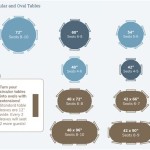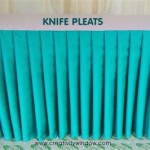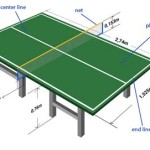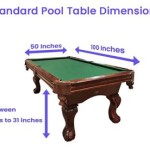Material for Table Tops: A Guide to Choosing the Right Surface
Table tops serve as the central focal point for any room. They are where we gather for meals, work, play games, and engage in countless other activities. The choice of material for a table top is a crucial decision, impacting not only its aesthetic appeal but also its functionality and durability. This guide explores various materials commonly used for table tops, their key characteristics, and factors to consider when making your selection.
Wood
Wood has long been a popular choice for table tops due to its natural beauty, warmth, and versatility. Different wood species offer unique characteristics, influencing durability, grain patterns, and color variations. For example, oak is known for its strength and resilience, while cherry wood boasts rich reddish hues. Solid wood table tops are generally more expensive, but offer the most natural look and can be refinished over time.
Wood veneers are a more affordable option, using thin layers of wood glued to a less expensive substrate. They offer the appearance of solid wood without the high cost. Engineered wood, like plywood and MDF, provides a consistent and stable surface but lacks the natural beauty of solid wood. When choosing wood for your table top, consider your desired aesthetic, budget, and the level of maintenance you are willing to undertake.
Glass
Glass table tops offer a contemporary and sleek appearance. They are highly resistant to stains and scratches, making them easy to clean. Glass can be tempered for added strength and safety, reducing the risk of shattering. However, glass table tops are relatively susceptible to heat damage and may require careful handling to avoid scratches.
The transparency of glass creates a sense of openness and allows the beauty of the underlying table base to shine through. Depending on your design preference, glass table tops can be clear, frosted, or patterned. The downside is their high maintenance requirements and propensity to show fingerprints. You can choose from a variety of types, including tempered, laminated, and colored glass.
Stone
Stone table tops bring a timeless elegance and durability to any space. They are available in a wide range of natural materials, including granite, marble, slate, and limestone, each with its own unique color and texture. Stone is resistant to scratches, heat, and moisture, making it ideal for high-traffic areas.
However, stone can be expensive and requires specialized care. The porous nature of some stones can absorb stains, making sealing crucial. Stone table tops are generally heavy and may require a sturdy base to support their weight. You can choose from various finishes, including polished, honed, and tumbled, based on your desired aesthetic and level of sheen.
Metal
Metal table tops offer a modern, industrial feel. Stainless steel is popular for its durability, resistance to scratches, and easy maintenance. Aluminum is lighter than steel and is available in different finishes, including brushed, polished, and anodized. Copper and brass table tops bring a touch of warmth and patina with time.
Metal table tops can be prone to denting and scratching, especially with softer metals. They may also require regular cleaning to avoid staining and discoloration. Metal table tops often serve as a statement piece, adding a modern or industrial touch to the room.
Laminate
Laminate table tops are a popular choice for their affordability and durability. They are made of layers of paper impregnated with resin and sealed with a protective coating. Laminate table tops are available in a wide range of colors, patterns, and textures, mimicking the look of wood, stone, or even metal.
While laminate is relatively inexpensive and durable, it is not as scratch-resistant as solid wood or stone. It can also be prone to heat damage and may not be as aesthetically appealing as natural materials. However, laminate is an excellent budget-friendly option that offers a wide range of design possibilities.
Other Materials
Other materials used for table tops include ceramic, acrylic, and reclaimed wood. Ceramic offers a durable, stain-resistant surface and can be found in a variety of colors and patterns. Acrylic is lightweight and offers a sleek, modern look. Reclaimed wood adds character and sustainability to your space.
Factors to Consider
When choosing a table top material, consider the following factors:
- Style: Choose a material that complements your overall design aesthetic and furniture style.
- Durability: Consider the expected level of use and potential wear and tear.
- Maintenance: Choose a material that requires minimal upkeep and fits your lifestyle.
- Budget: Materials range in price, so set a budget before you begin exploring options.
By carefully considering these factors, you can choose the perfect table top material to create a beautiful and functional centerpiece for your space.

8 Common Table Top Material Ideas You Can Choose

How To Choose The Best Tabletop Material For Your Formal Dining Room

The One Stop Guide To Materials For Table Tops

Tabletop Materials Which One Should You Use Indesign Live Interior Design And Architecture

What Is The Best Material For Your Dining Table Top Zad Interiors

Vs Table Top Materials

The One Stop Guide To Materials For Table Tops

Is Mdf Safe For Home Use And As Tabletop Material Specifically Progressive Desk

The One Stop Guide To Materials For Table Tops

Tabletop Materials Which One Should You Use Indesign Live Interior Design And Architecture
Related Posts








